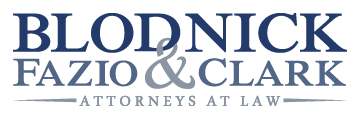Landlord-tenant law in Suffolk County, New York, continues to evolve, reflecting broader state-level reforms and local ordinances aimed at balancing the rights and responsibilities of landlords and tenants. As of 2025, several key trends are shaping the legal landscape, driven by legislative changes, tenant protections, and judicial practices. These trends impact rental agreements, eviction processes, and anti-discrimination measures, creating a dynamic environment for property owners and renters alike.
One significant trend is the continued influence of New York’s Housing Stability and Tenant Protection Act (HSTPA) of 2019, which has reshaped landlord-tenant dynamics across the state, including Suffolk County. The HSTPA imposes strict limits on rent increases for rent-stabilized units, caps fees, and enhances tenant protections against arbitrary evictions. In Suffolk County, where rent stabilization applies in certain communities, landlords must adhere to guidelines set by the state’s Division of Housing and Community Renewal (DHCR). For instance, landlords can only claim up to three Individual Apartment Improvements (IAIs) within a 15-year period, with costs capped at $15,000, and these increases are temporary, expiring after 30 years. This ensures tenants are not burdened with excessive rent hikes tied to renovations.
Another notable development is the implementation of Good Cause Eviction (GCE) laws, effective in New York City and potentially applicable to other municipalities like Suffolk County by 2025. GCE prevents landlords from evicting tenants without a specified “good cause,” such as non-payment of rent or lease violations. A rebuttable presumption exists that rent increases exceeding 5% plus the Consumer Price Index (or 10% of the existing rent, whichever is less) are unreasonable, requiring landlords to justify higher increases in court. While primarily enforced in NYC, Suffolk County landlords should monitor local adoption, as it could limit their ability to terminate leases without cause, especially for market-rate apartments.
Anti-discrimination protections remain a critical focus in Suffolk County. Landlords with buildings containing three or more units cannot refuse to rent based on a tenant’s lawful source of income, such as Section 8 vouchers or public assistance. Additionally, federal and state laws prohibit discrimination based on race, gender, disability, or other protected characteristics. Suffolk County’s Human Rights Commission provides a local avenue for tenants to file grievances if they suspect discriminatory practices, reinforcing fair housing standards.
The eviction process in Suffolk County is also under scrutiny, with courts emphasizing procedural compliance. Evictions for non-payment of rent require a 14-day Notice to Pay, while holdover proceedings (e.g., lease expiration) mandate 30 to 90 days’ notice, depending on tenancy length. Courts in Suffolk County are known to favor landlords in disputes, but tenants can delay proceedings by requesting adjournments or legal representation, often provided pro bono by organizations like Nassau/Suffolk Law Services. Illegal lockouts or utility shutoffs are strictly prohibited, and tenants can sue for triple damages in such cases.
Finally, lease requirements in Suffolk County mandate that landlords offer written leases of at least one year for buildings with three or more units, enhancing tenant security. This trend underscores the county’s commitment to formalizing rental agreements to prevent disputes.
In conclusion, Suffolk County’s landlord-tenant laws in 2025 reflect a tenant-friendly framework, with robust protections against unfair rent increases, discriminatory practices, and unjust evictions. Landlords must navigate these regulations carefully, while tenants benefit from increased legal recourse and support. Staying informed through resources like the Suffolk County Bar Association or local housing services is essential for both parties to thrive in this evolving legal landscape.
For more information, or if you or someone you know needs assistance with a landlord-tenant matter in Suffolk County, New York, please contact landlord-tenant attorney Jim Clark.


